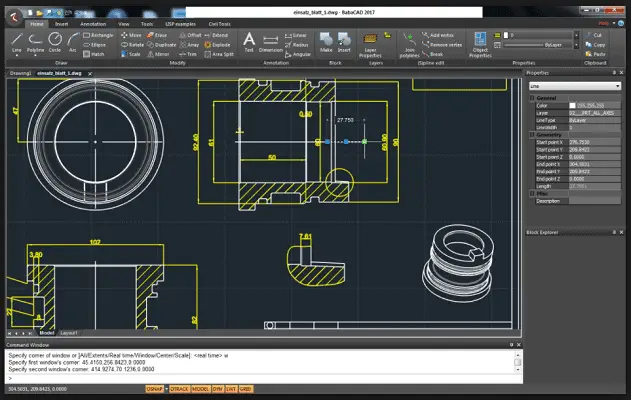
#BABACAD FULL LICENSE#
We’d say that users of Fusion 360’s free personal use license would best be advised to export everything they might ever think they need design files for immediately - if you discover you need to export them in the future, you’ll need one of the other licenses to do so. Most of these changes go into effect October 1, with the exception of the limit on active project files which goes into effect in January of 2021. All support for simulation, generative design, and custom extensions has been removed.CAM support has been drastically cut back: no more multi-axis milling, probing, automatic tool changes, or rapid feeds, but support for 2, 2.5, and 3 axis remains.Rendering can now only be done locally, so leveraging cloud-based rendering is no longer possible.

#BABACAD FULL PDF#
Thankfully this still includes STL files but alas, DXF, DWG, PDF exports are all gone
#BABACAD FULL SOFTWARE#
The clear message from Autodesk is that Fusion 360 - the widely used suite of CAD and CAM software - will still offer a free-to-use non-commercial license for design and manufacturing work, with the inclusion of a few very big “buts” that may be deal-breakers for some people. That may be a reach, but judging by the reaction of the Fusion 360 community to the announced changes to the personal use license, they’re pretty much hating life right now. So logically, it seems we’ve proved nobody likes life.
#BABACAD FULL FULL#
In full AutoCAD it is not a problem at all.Change is inevitable, and a part of life. But there is a high probability that they will miss digitizing nodes in the original polyline and it is a very time consuming exercise. It would be possible to digitize the original polyline, offset the digitized polyline and then delete the digitized polyline. What is needed is a new offset polyline without XData. When you have a very long cable as a polyline, say 1+ km long with hundreds of segments, and a new cable needs to be drawn as an offset to this polyline then it would be great to use the offset command, but when that is done the offset polyline has all the XData of the original polyline. The XData on the existing objects that were exported in DWG format must be retained the new objects must not have any XData. It is nothing like Microstation, which I have, and has a very limited CAD side to it. The Intergraph software is GNET which is used as a GIS for a electricity supplier, it also includes telecom, gas and topo. Maybe also save as far back as possible R14 may strip out the xdata.
This sounds like the objects in LT a external shp to DXF/DWG may be the way to go. MAP has a number of functions to convert this sort of stuff to plain Autocad objects. The other thing is the GIS systems use SHP as their way of sharing and generally they have a lot of buried data attached.Īs an example a contour will appear as a pline but it has xdata which is its current height. The best way to import the job is you must set up a translation table so dgn becomes a better DWG this may fix the problem of the xdata. Autocad has blocks microstation cells and yes they are a alpha character naming convention. My $0.05 Intergraph is microstation and the compatibilty sometimes between the two is a problem. These guys are not fit in AutoCAD because they don't want to be, they have no " drive to learn", does that ring a bell from another current thread? They want someone to come up with any easy answer for LT. It would also not be an option to strip of the XData later all in one go, they would never remember which objects they needed to strip. I don't really think that they would go for that. Suggest to them that they need to offset the polyline (copy the block), save their drawing in AutoCAD, close it, re-open it in another CAD program, run a LISP routine to strip off the XData, save the drawing, close the drawing, re-open the drawing in AutoCAD and carry on. To try and convince them to adopt a further CAD program just for LISP is just not going to happen. They are electrical engineers/planners who use CAD because they have to, but they don't want to. BabaCAD is so far from complete it's almost useless for anything but LISP routines IMO.

All they'd have to do is use BabaCAD for lisp routines then AutoCAD for everything else.


 0 kommentar(er)
0 kommentar(er)
